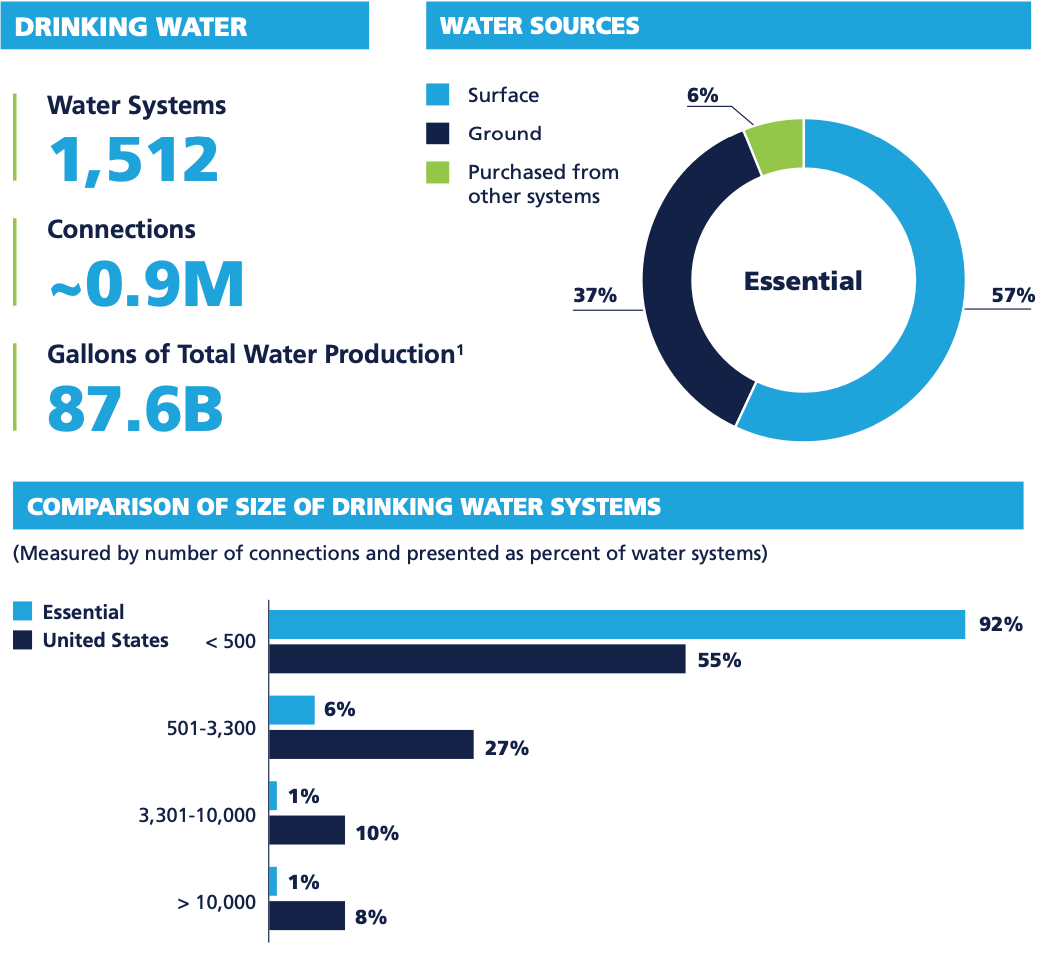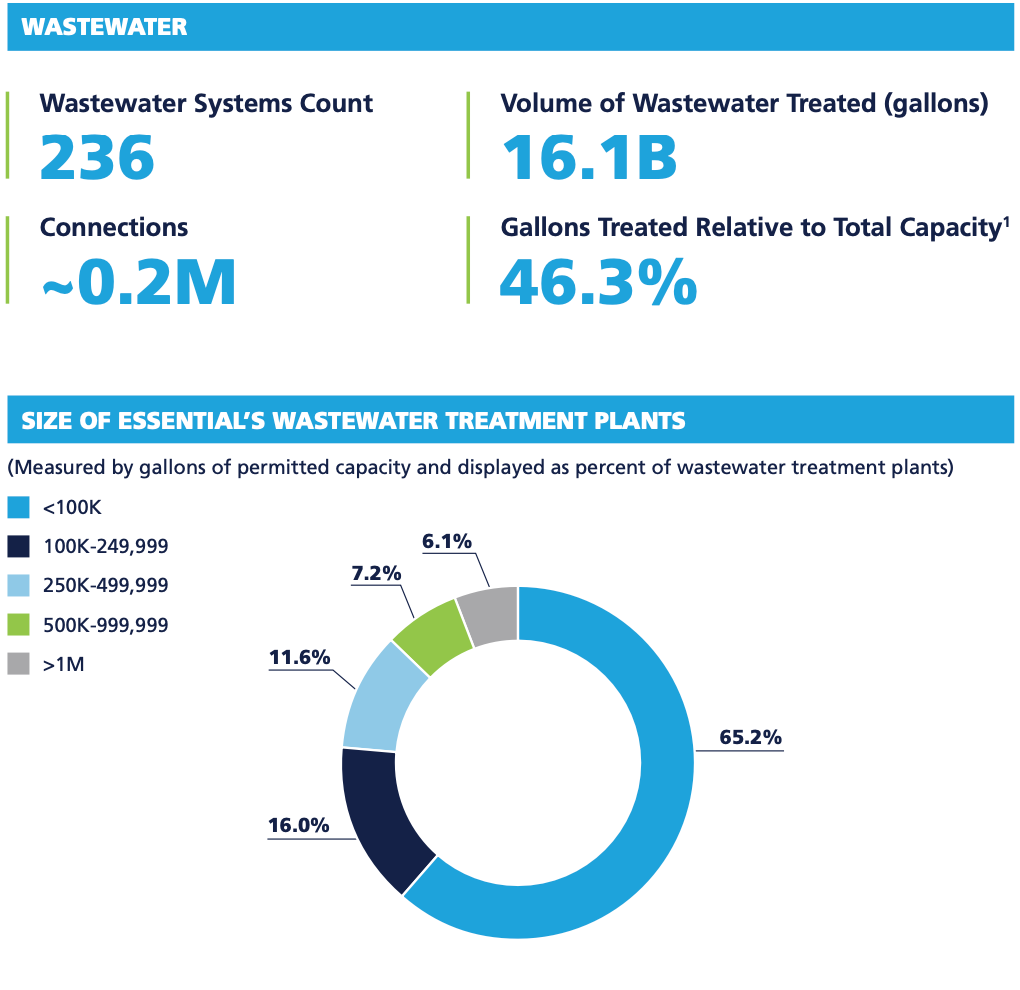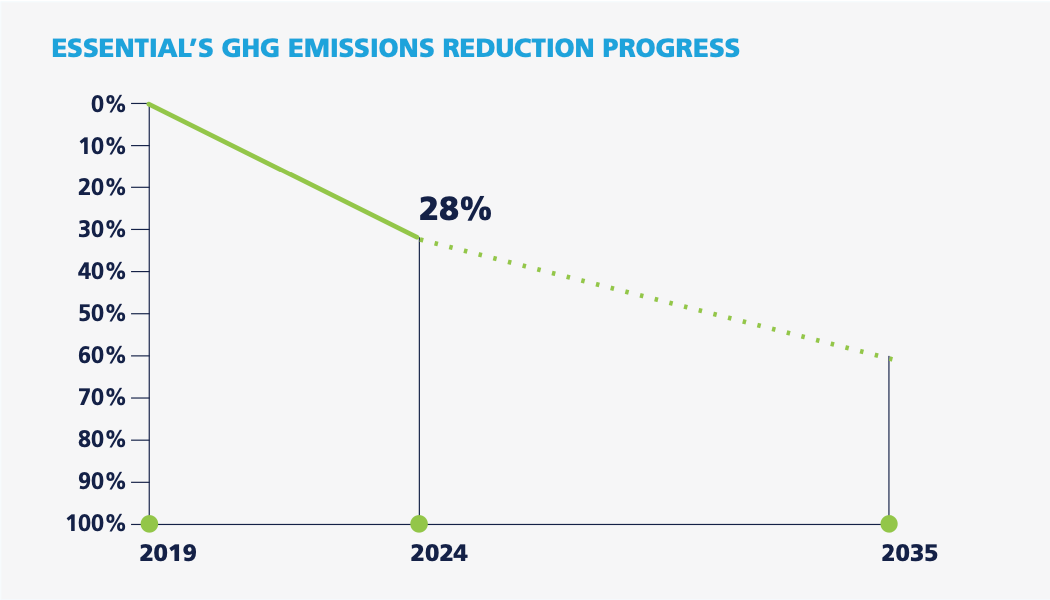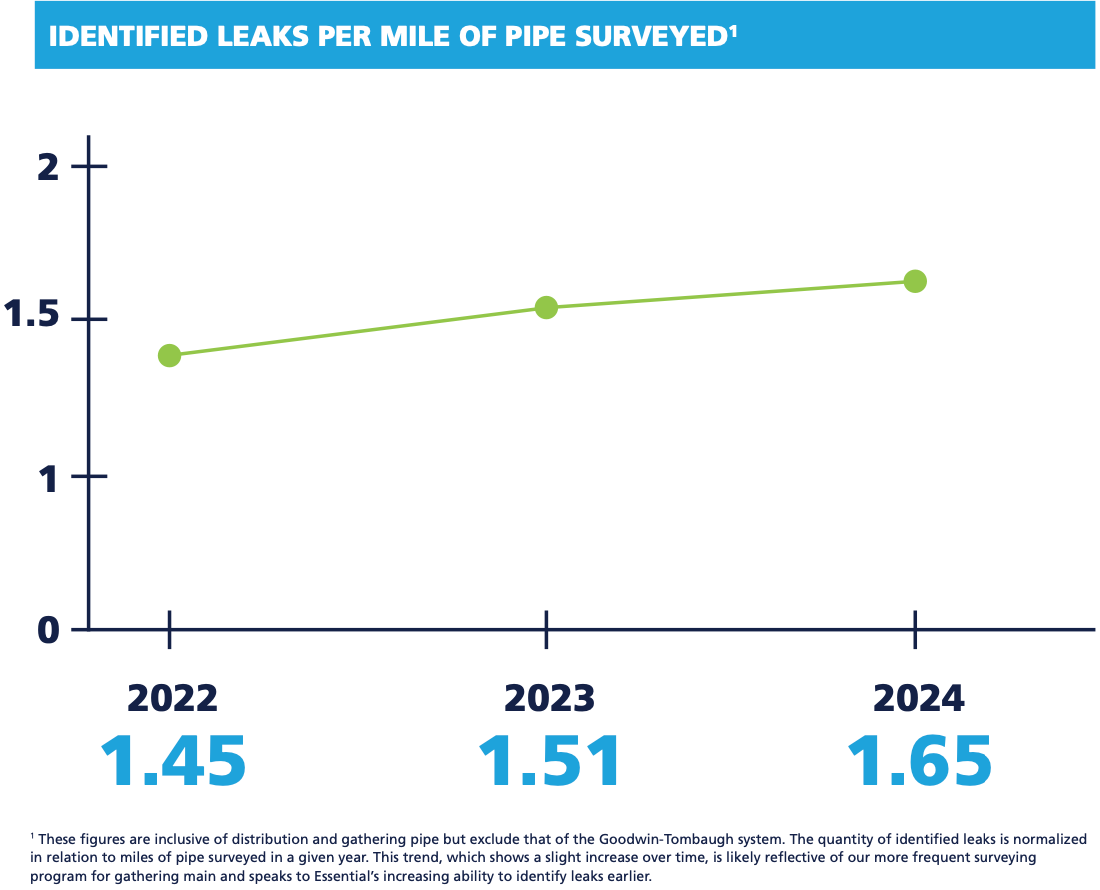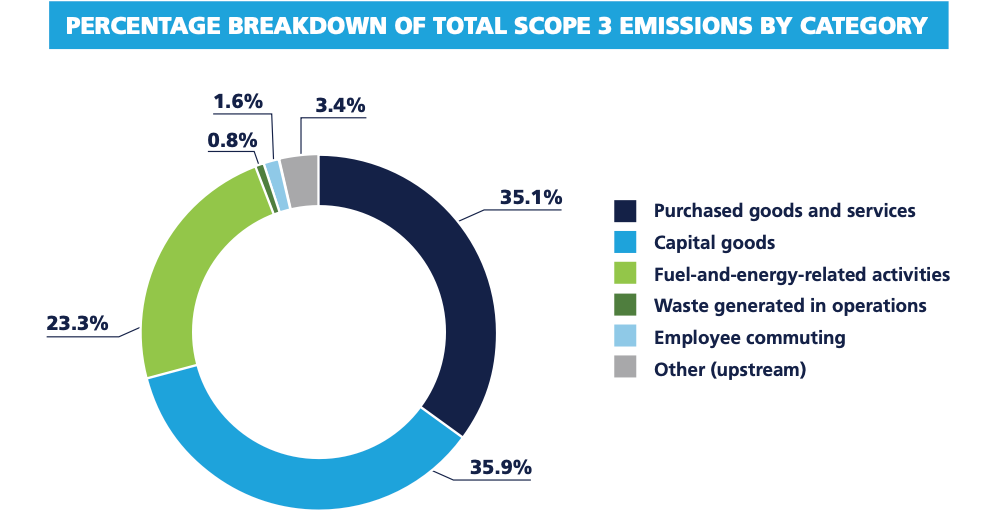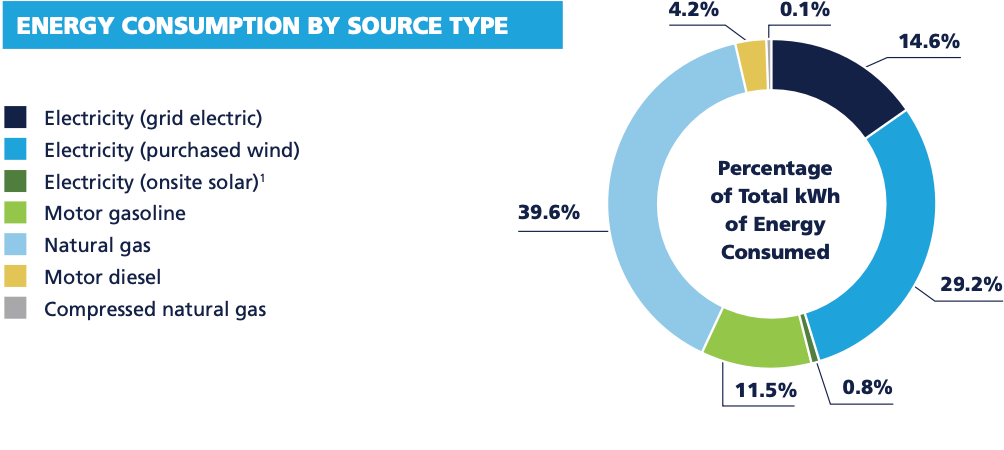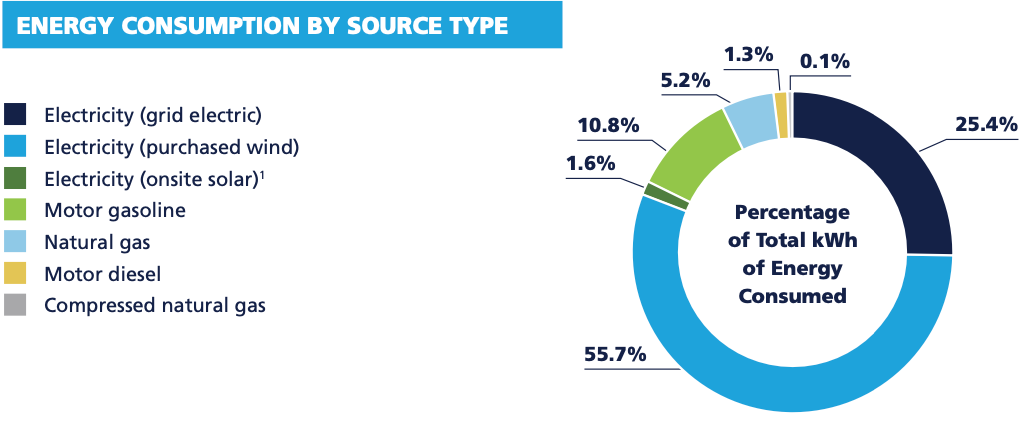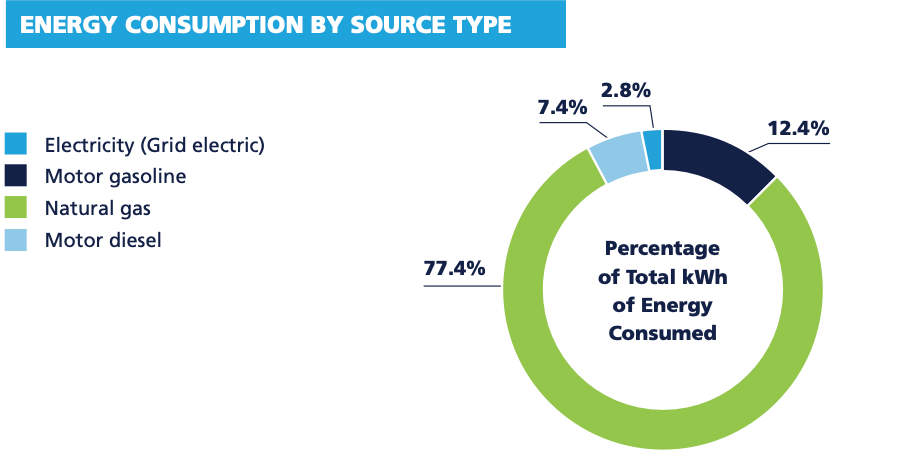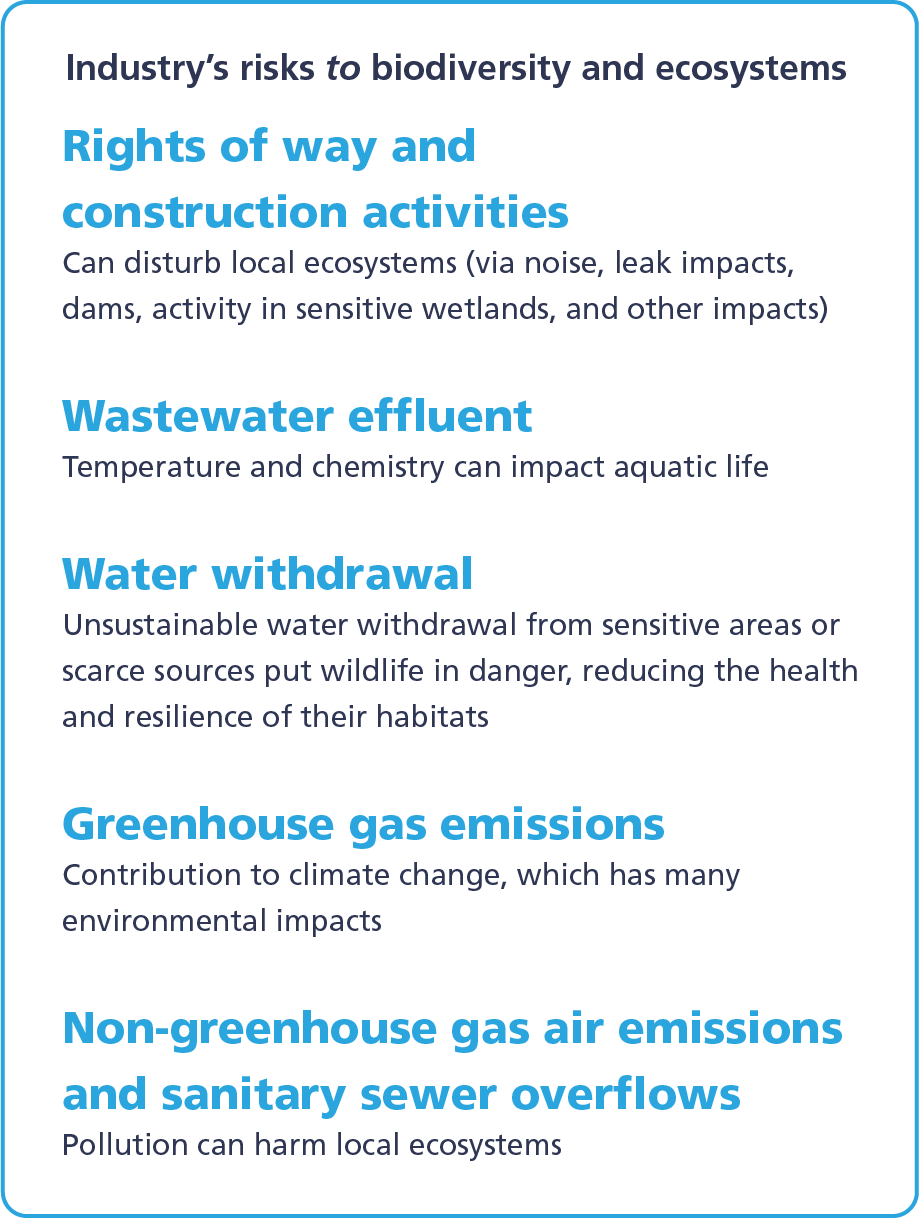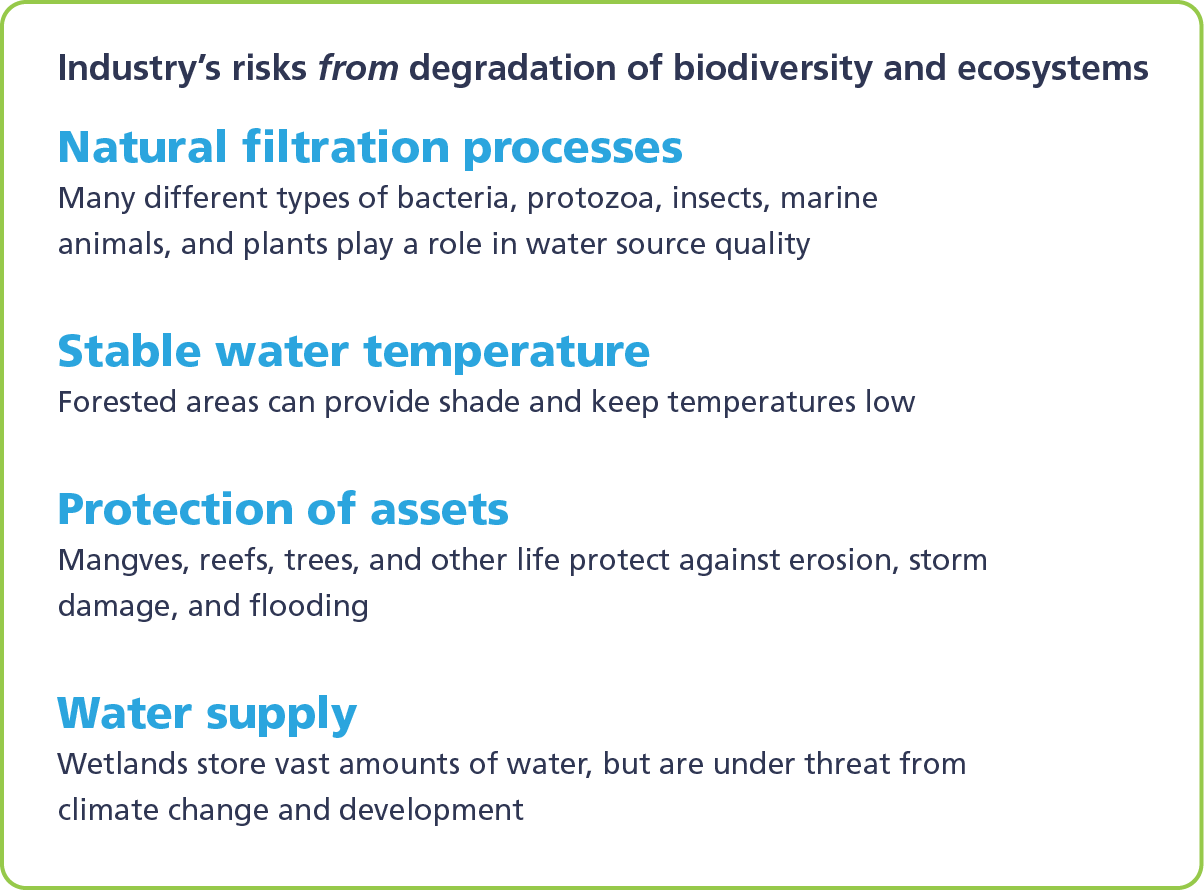Environment
Please click on the tiles below for more information about Essential’s targeted environmental initiatives.
Download the ReportEnvironmental Stewardship
Environmental Stewardship
At Essential, our mission is to sustain life and improve economic prosperity by safely and reliably delivering Earth’s most essential resources to our customers and communities fuel everything we do. We have taken these commitments seriously for more than 135 years.
Fresh water is a limited resource on our planet, and we need to manage it responsibly.
Through conservation and stewardship, Essential helps to safeguard water security for future generations. Essential also strives to operate a safe, resilient gas distribution system that provides affordable and reliable energy to our customers.
Our Sustainability and Environmental Policy outlines the ways we apply our mission throughout our environmental profile. Our actions reflect the values that permeate our team and operations around the country. Across our operations, we have participated in environmental conservation and stewardship with many community partners to preserve and protect sensitive lands, plant thousands of trees, manage invasive species, reintroduce and reestablish native species and protect habitats. We have also released an ambitious emissions reduction target with concrete actions outlined to achieve this goal.
In this report, we expand on our commitment to present our stakeholders with some of the most detailed and transparent disclosures in the utilities industry. Whether we are speaking about water quality, gas system reliability, greenhouse gas (GHG) emissions or our waste program, we aim to provide rigor around both quantitative disclosure and qualitative explanations and context.
Recent Environmental Highlights
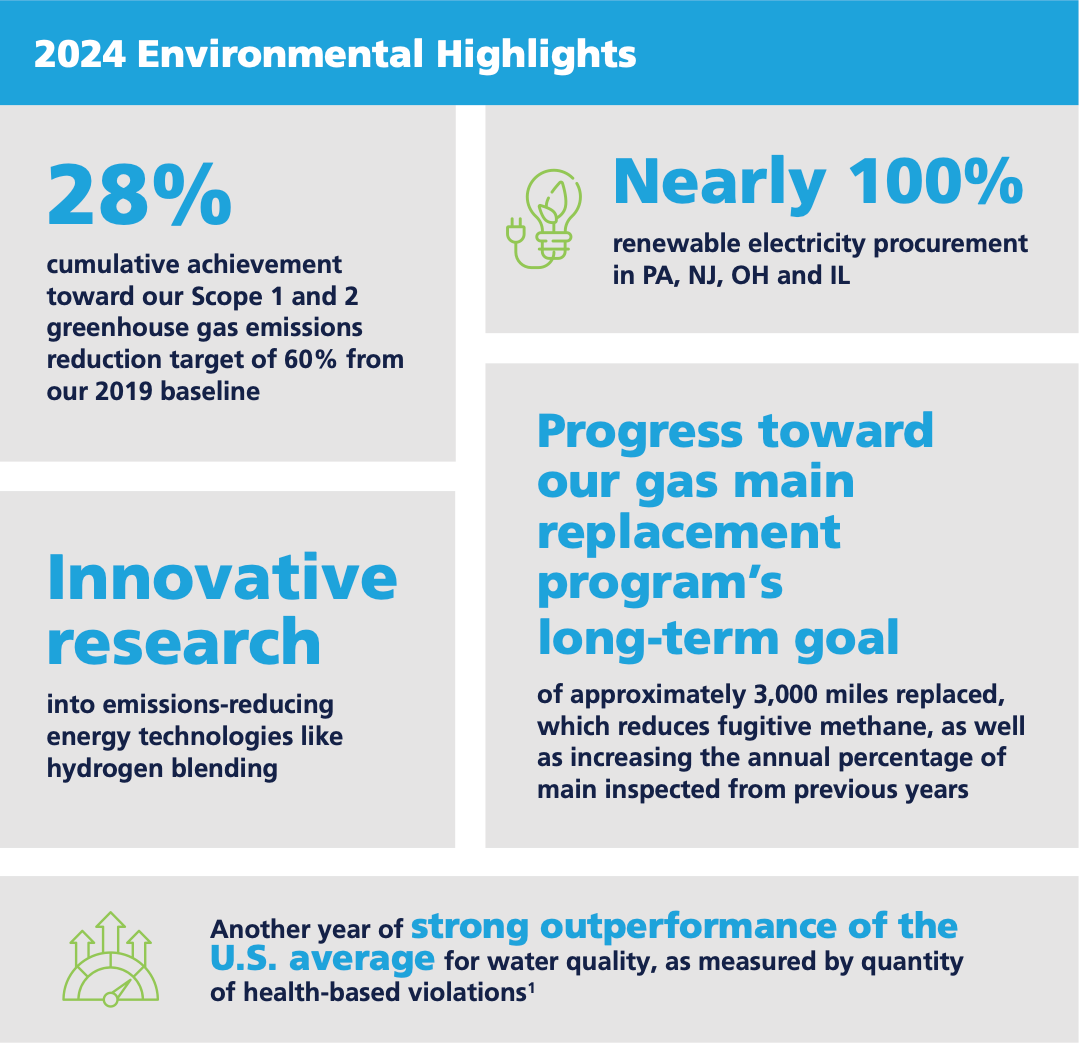
Environmental Management System
Environmental Management System
As a large and diversified utility, Essential’s strong environmental management system is critical to our operations.
Our Environmental, Health and Safety management program identifies, prioritizes, communicates, mitigates and manages risks to ensure safe and reliable service for our customers. These areas are benchmarked through performance and risk reporting coordinated at all levels of the company.
The Compliance Assurance Program (CAP) is a key tool in Essential’s Environmental Management System (EMS). Each Essential company has designated personnel (environmental directors, environmental managers, environmental specialists, etc.) who are responsible for supporting the CAP while focusing on environmental compliance. As part of our alignment with the elements of ISO 14001, Essential’s CAP is founded on the concept of “Plan-Do-Check Act.”
Plan-Do-Check-Act
Plan |
Do |
Check |
Act |
| Policy | Corporate Programs | Compliance Checking | Root Cause Analysis |
| Benchmarking | State SOPs | Water Quality Tracking | Corrective Actions |
| Target Setting | Communications | CAP Meetings | Programmatic Changes |
| Regulatory Register | Training | Auditing | External Support |
| Risk Analysis | Emergency Planning | Management Reviews | Peer Reviews |
In addition to routine communications and activities, special CAP meetings are held multiple times per year for each state and business and are attended by presidents, vice presidents, directors, managers and operations staff from corporate and state compliance, operations and engineering. Topics covered in these meetings include compliance metrics, water quality, environmental events, regulatory and company hot topics, and system/project review. Actions, events, activities, documents and records are tracked and managed in our Environmental, Health and Safety Data Management System software.
Additionally, Essential is in the process of implementing a water quality data management system across our water and wastewater utilities. This will ultimately serve as the central repository for all water and wastewater quality data, providing company-wide access to trends and early identification of developing issues.
Business Continuity and Emergency Preparedness
Business Continuity and Emergency Preparedness
Essential Utilities utilizes four plans throughout its operations to ensure the organization is appropriately prepared for emergency response and business continuity (ERBC). These plans are in compliance with various state regulatory requirements through annual self-certification.
Accountability and governance for these plans rest with the company’s senior management team, including the CEO. While numerous ERBC plans exist across the organization, all plans are in accordance with industry, regulatory and company standards, ensuring employee and community safety are primary considerations in all situations. Due to the various geographic regions where our business operates and the diversity of our business units, water, wastewater and natural gas distribution, the responsibility of the various ERBC plans rests with designated organizational leaders to ensure they are effective and appropriate for their business needs and structure.
Core Emergency Response and Business Continuity Plans
-

EMERGENCY RESPONSE PLANS
Essential’s water and gas businesses have detailed emergency response plans (ERPs) that outline the required procedures, guidelines, organizational support and communication for responding to natural gas emergencies on pipeline systems, customer service outages or other natural disasters that present potential hazards to the public, property or environment. The plan is reviewed and updated annually with all operating personnel, and tabletop exercises and emergency simulations are conducted to enhance preparedness for these types of events.
-

PHYSICAL SECURITY PLANS
Physical security plans are intended to be a guide for all employees in reference to security measures for facilities and employees, as well as designating a Security Team that will be responsible for all aspects of the plan. The nature and severity of the security event is evaluated to determine the required response, coordination and resources.
-

CYBERSECURITY PLANS
The cyber incident response (IR) plan outlines the general guidelines for responding to computer security incidents throughout the company’s information technology (IT) and operational technology (OT) environments. In addition to providing a standardized, enterprise-wide IR process flow, it establishes the roles and responsibilities for Essential Utilities and its IR stakeholders, and identifies incident triggering sources, incident types and incident severity levels. This IR plan applies to all Essential Utilities employees and contractors responding to computer security incidents involving Essential Utilities information technology systems and information assets. This IR Plan applies to Essential Utilities IT and OT environments.
-

BUSINESS CONTINUITY PLANS
Business continuity plans provide mechanisms to ensure an organized response and recovery for any unplanned event that disrupts normal business operations, which could include loss of utility service, loss of access to buildings or any other catastrophic event. The purpose of the business continuity plans is to keep all our water/wastewater and natural gas distribution operating facilities safely online and in compliance with applicable regulatory requirements. This plan also promotes appropriate maintenance of distribution systems, uninterrupted water supply, wastewater processing and gas distribution and the health and welfare of our employees, customers, and their families.
Supplemental Plans
Supplemental plans are used in conjunction with or in a supplemental manner to the Emergency and Incident Response Plans.
AQUA SEVERE WEATHER PLAN
The severe weather plan provides a framework for coordination between state level operational leads and enterprise functional leads related to dangerous weather preparation and emergency response. This plan is applicable to weather events (forecasted or actual), that present a risk to operational and/or business continuity. The framework is flexible and can be used for localized, statewide or multi-state events.
The plan is designed for weather events that are unusual for the area of operation. The main types of weather events include, but are not limited to, snow events unusual for the geographic area, prolonged freezing temperatures, heavy precipitation, high wind, hurricanes or flooding. These types of events can result in economic costs, loss of human lives, operational interruptions and property damage. Additionally, these impending events can be designated by a state governor.
CRISIS COMMUNICATION PLAN
Crisis communication plans are a complement to the ERP and the incident management plan (IMP). It serves as a reference guide for utilizing the company’s internal and external communication vehicles as necessary when responding to events that could compromise the brand. This plan is not intended to replace systems and processes already in place as part of the ERPs or IMPs.
INCIDENT MANAGEMENT PLANS
IMPs provide mechanisms to ensure an organized response and recovery for any unplanned major event that disrupts multiple normal business operations and further provides structure for managing and coordinating the company’s four individual incident plans: emergency response, business continuity, physical security, and IT cyber security.

